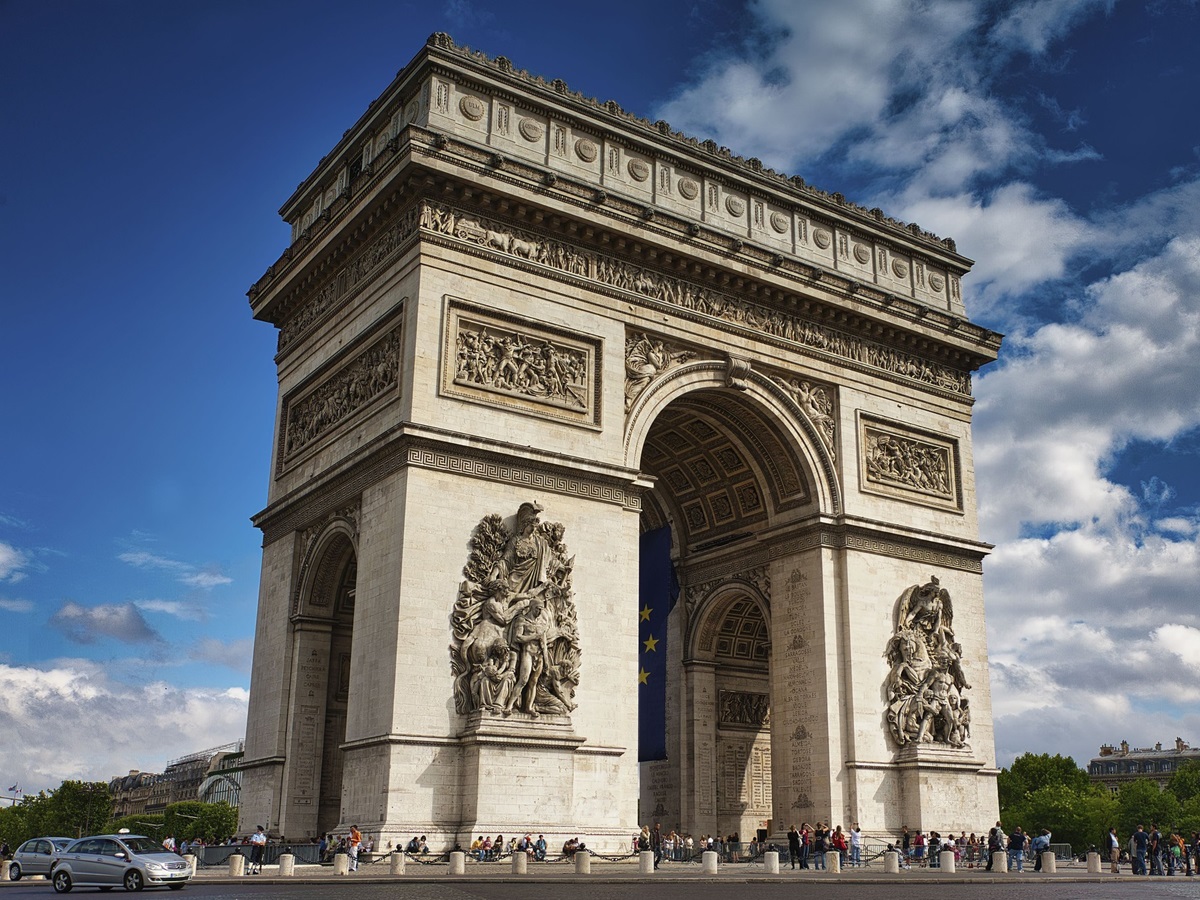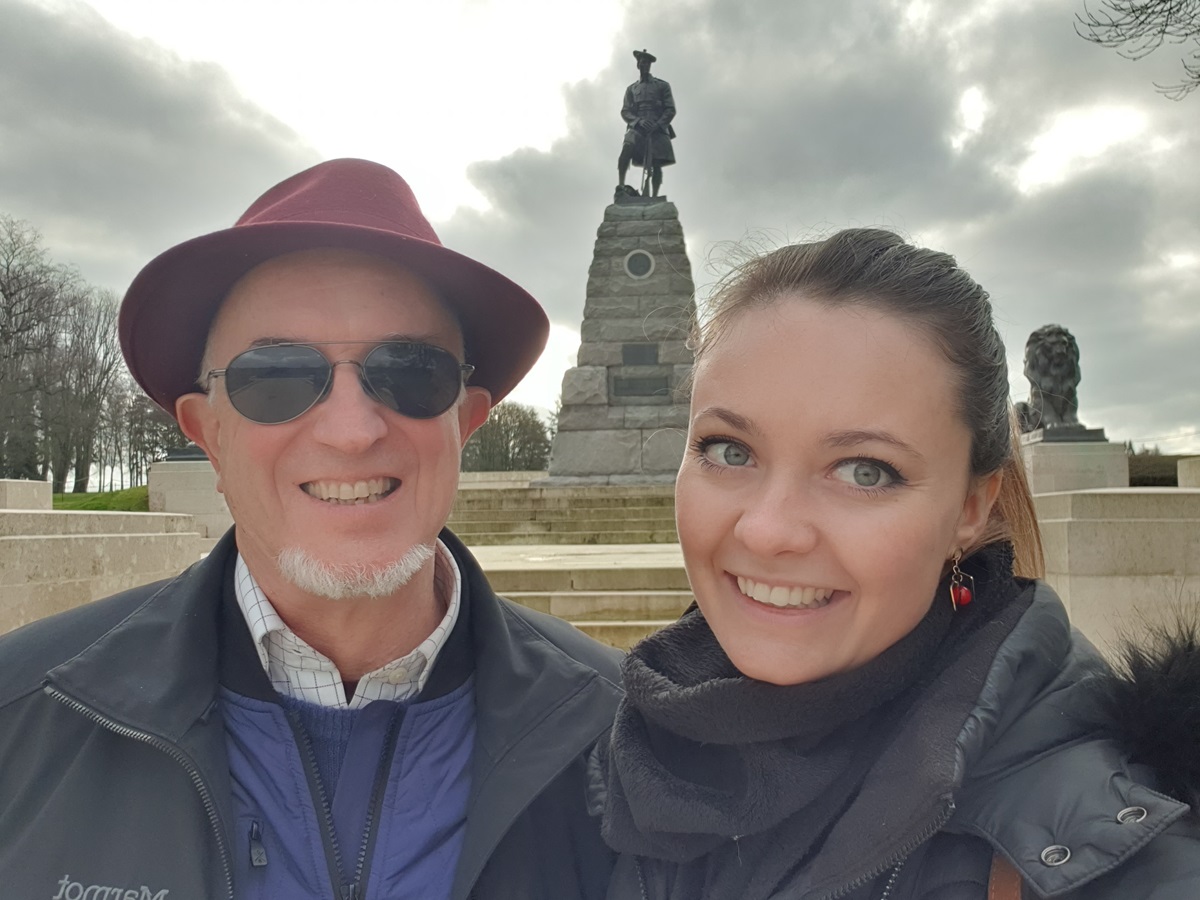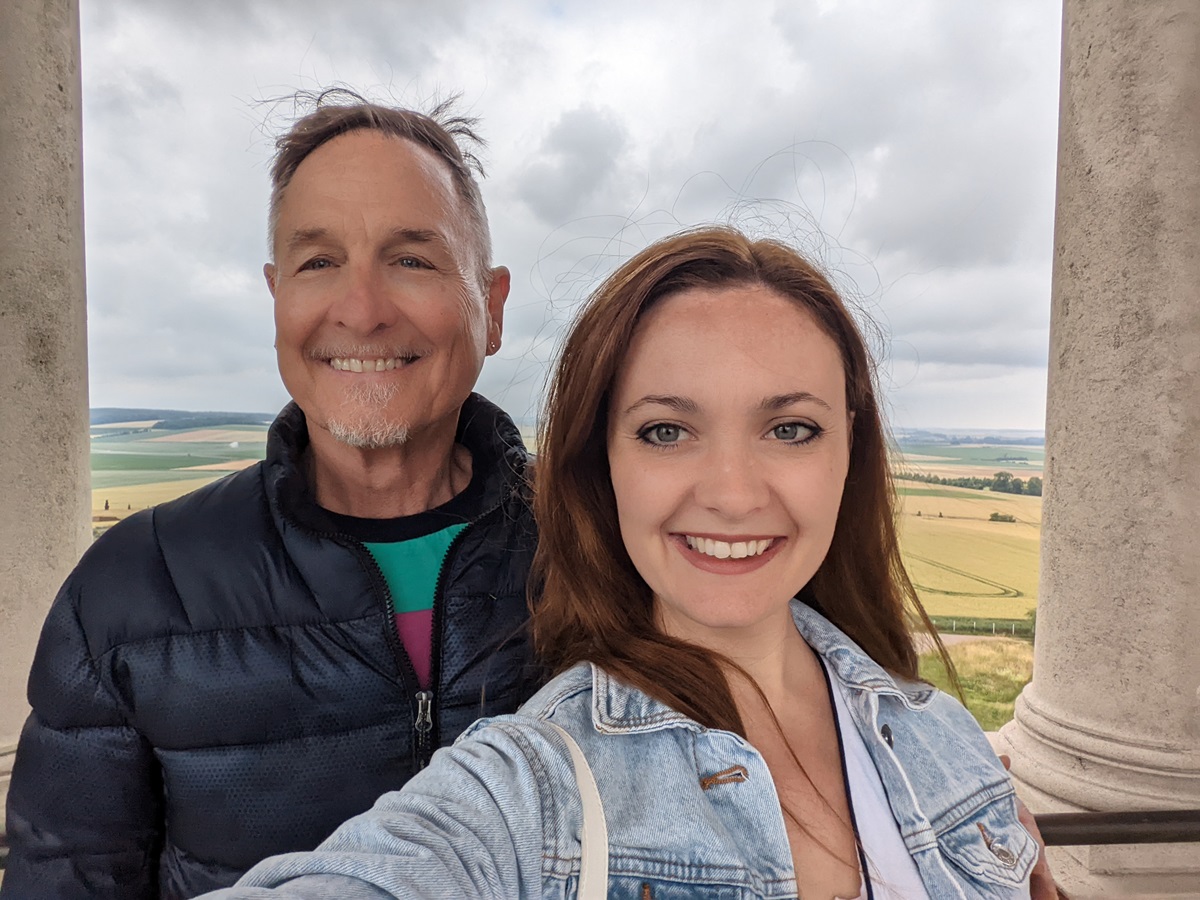- Nov 6, 2024
World War One in France
- Eliane
- French immersion Outings / History
- 0 comments
Learn about WW1 in the Somme region of France and practice your French with this free French story with English translation.
(This article was written in 2020. I may not continue doing those visit for my immersion students now that I live in Carcassonne but my mother Chantal might).
1 – WW1 In France
Le 11 Novembre est une date importante dans le monde entier, mais elle a une importance toute particulière pour moi car c’est le jour d’anniversaire de ma grand-mère que j’adore ! :-))

Si vous venez en immersion chez moi vous aurez d’ailleurs sans doute la chance de la rencontrer car nous essayons de partager un repas de famille par semaine : soit chez moi soit chez ma mère Chantal.
Alors, aujourd’hui je ne vais pas vous parler de la naissance de ma grand-mère mais de l’Armistice, du vocabulaire spécifique utilisé pendant la Première Guerre mondiale et plus particulièrement de ma région remplie de l’histoire des Première et Deuxième Guerre mondiales.
2 – WW1 End Anniversary
Aujourd’hui nous fêtons la fin de la première guerre mondiale et donc la signature de l’Armistice. En effet, l’Armistice a été signée le 11 Novembre 1918.
Cette année, la Covid-19 bouscule les commémorations du 11 novembre. Normalement, cette date anniversaire fait l’objet d’une série de cérémonies rendant hommage aux soldats de la Grande Guerre auprès des quelques 30 000 monuments aux morts en France. Et le président de la République dépose une gerbe sur la tombe du Soldat inconnu sous l’Arc de Triomphe.

Mais cette année, le déroulement des cérémonies est quelque peu différent.
En effet, les commémorations sont maintenues dans les différents départements de France, mais elles sont restreintes, en respectant les mesures de distanciation, et sont interdites au public. Il est quand même possible d’y assister depuis son salon, car elles sont retransmises en direct à la télévision. L’après-midi, Emmanuel Macron retrouvera l’auteur et poète Maurice Genevoix, grièvement blessé pendant le Première Guerre Mondiale, pour sa panthéonisation (= Fait de placer la dépouille d’une personnalité au Panthéon).
3 – A Unique French Vocabulary Used During WW1
Au début de la première guerre mondiale, les soldats du monde entier ont rencontré une petite difficulté : tous les soldats français ne parlaient pas forcément un français correct !
En effet, beaucoup parlaient leur propre dialecte (différent selon chaque région : comme le Picard par exemple). Mais très vite, ils ont créé un dialecte propre à la guerre : « l’argot des tranchées » (un mixte de plusieurs dialectes et de français populaire).

4 – WW1 Memorials And Battlefields In The Somme
Alors je ne vais pas vous faire un cours d’histoire, mais plutôt vous montrer ce que vous pourriez découvrir dans notre jolie région.
Très souvent, mes étudiants en immersion de français souhaitent s’immerger dans cette partie de l’histoire, fouler les pas des soldats ou même parfois revivre l’histoire d’un ancêtre.
Pour faire ça, il n’y a rien de mieux que visiter la Somme ! Il est presque impossible de faire 10km sans passer à côté d’un monument aux morts ou un cimetière de Guerre !
Vous trouverez dans la Somme des mémoriaux pour beaucoup de nationalités différentes. Et je vous emmènerai voir avec plaisir celui ou ceux qui vous intéressent le plus.
Mais en règle générale, j’emmène mes étudiants voir le Lochanagar Crater car c’est un trou de mine datant de la première guerre et qui est particulièrement impressionnant. Et pour rejouer quelques scènes qu’ont dû vivre les soldats, je vous emmène vous promener dans les tranchées au Mémorial de Beaumont Hamel.

5 – Surprise On The French WW1 Battlefields
Mais il y a une chose à laquelle mes étudiants ne s’attendent jamais ! Chaque fois que je leur fais visiter les champs de bataille, presque tous mes étudiants me répondent la même chose quand je leur pose la question :
– Alors qu’est-ce que tu en as pensé ?
– C’est incroyable ! Mais je ne m’attendais pas du tout à ça !
– Pourquoi ?
– Je ne pensais pas que ce serait aussi beau ! C’est paisible et agréable ! Je m’attendais à quelque chose de triste et sans vie !
– De la boue partout, des morceaux de fer rouillé et une ambiance glauque ?
– Oui tout à fait ! Mais finalement c’est très joli !
6 – WW1 French Museums
Et si vous êtes passionnés d’histoire mais que vous ne voulez pas vous promener en pleine nature il y a aussi de nombreux musées au sujet de la grande guerre.
Par exemple, j’emmène souvent mes étudiants visiter le musée de la Somme 1916. Quand on entre dans ce musée on doit rejoindre une galerie souterraine dans laquelle ils ont recréé des scènes vécus par les différents soldats lors de la Bataille de la Somme qui débuta le 2 Juillet 1916. Ce musée est vraiment très bien fait et très intéressant à voir ! Mais il n’est pas le seul bien entendu !
En résumé, il y a beaucoup de choses à voir dans ma région, beaucoup d’histoire et c’est avec plaisir que je vous ferai découvrir les différents sites qui m’entourent !
TRANSLATION
1 – WW1 In France
November 11th is an important date all over the world, but it’s especially important for me because it’s my grandmother’s, that I love, birthday ! :-))
If you come in immersion with me you will probably have the chance to meet her because we try to share a family meal a week: either at my place or at my mother Chantal’s.
So today I’m not going to tell you about the birth of my grandmother but the Armistice, the specific vocabulary used during WW1 and more particularly about my region filled with WW1 and WW2 history.
2 – WW1 End anniversary
Today we are celebrating the end of WW1 and therefore the signing of the Armistice. Indeed, the Armistice was signed on November 11, 1918.
This year, the Covid-19 is shaking up the commemorations of November 11. Normally, this anniversary date is the subject of a series of ceremonies paying tribute to the soldiers of the Great War at some 30,000 war memorials in France. And the President of the Republic lays a wreath on the tomb of the Unknown Soldier under the Arc de Triomphe.
But this year, the course of the ceremonies is somewhat different. Indeed, commemorations are maintained in the various departments of France, but they are restricted, respecting the distancing measures, and are prohibited to the public. It is still possible to watch them from your living room, as they are broadcast live on television. In the afternoon, Emmanuel Macron will meet the author and poet Maurice Genevoix, seriously injured during the First World War, for his pantheonization (= Placing the remains of a personality in the Pantheon).
3 – A Unique French Vocabulary Used During WW1
At the beginning of the WWI, soldiers from all over the world encountered a small difficulty: not all French soldiers spoke correct French!
Indeed, many spoke their own dialect (different according to each region: as the Picard for example). But rapidly, they created a dialect specific to the war: « trench slang » (a mix of several dialects and popular French).
4 – WW1 Memorials And Battlefields In The Somme
So I’m not going to teach a history lesson, but rather show you what you could discover in our beautiful region.
Very often, my French immersion students wish to immerse themselves in this part of the story, to walk in the soldier’s footsteps or even sometimes to relive the history of an ancestor.
To do that, there’s nothing better than visiting the Somme! It’s almost impossible to walk 10km without running into a War Memorial or War Cemetery!
You’ll find, in the Somme, memorials for many different nationalities. And, with pleasure, I’ll take you to see whoever interests you the most.
But as a general rule, I take my students to see the Lochanagar Crater because it is a mine hole dating from the first war and that is particularly impressive. And to relive some scenes that must have experienced the soldiers, I take you for a walk in the trenches at the Beaumont Hamel Memorial.
5 – Surprise On The French WW1 Battlefields
But there’s one thing that my students never expect! Every time I show them the battlefields, almost all of my students answer the same thing when I ask them the question:
– So what did you think?
– It’s incredible! But I did not expect that at all!
– Why?
– I did not think it would be so beautiful! It’s peaceful and nice! I was expecting something sad and lifeless!
– Mud everywhere, pieces of rusty iron and a gloomy atmosphere?
– Yes quite so! But in the end, it’s very pretty!
6 – WW1 French Museums
And if you’re passionate about history but don’t want to walk in the wilderness there are also many museums about the Great War.
For example, I often take my students for a tour of the museum of the Somme 1916. When we enter this museum we must take an underground gallery in which they recreated scenes experienced by the various soldiers during the Battle of the Somme which began July 2nd, 1916. This museum is really very well done and very interesting to see! But it’s not the only one of course!
In summary, there are many things to see in my region, a lot of history and it’s with pleasure that I’ll help you discover the different sites around me!